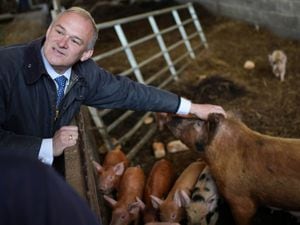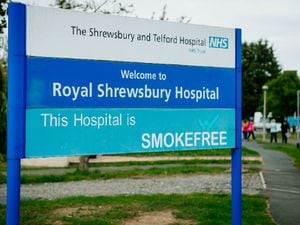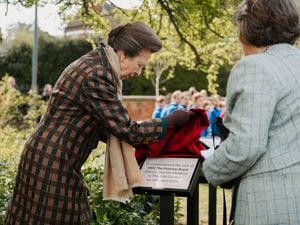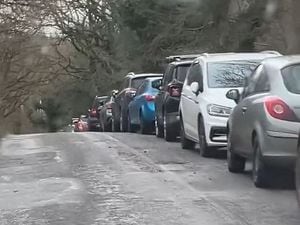Pilot's anniversary pilgrimage to scene of his first air crash
For pilot John Hoyte, it has been a 40th anniversary to remember – and to reflect on how much worse things might have been.
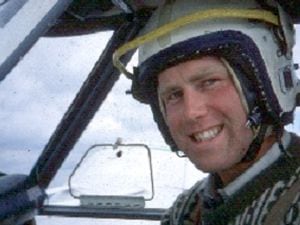
Because on June 1, 1982, he was in his first – but not last – air crash.
Happily he was able to walk away from the wrecked plane after it came down heavily in a farmer's wheat field near Bridgnorth.
And having tracked down the farmer, he has made an anniversary pilgrimage – actually, one day early – to the scene of the drama, which was at Glazeley, about five miles from his Bridgnorth home.
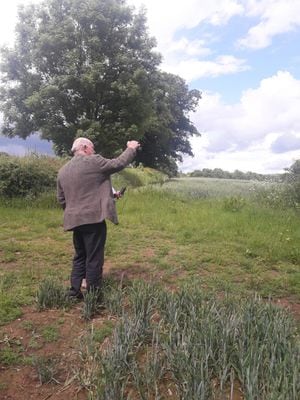
"I have not been back for 40 years as I have lived away from Shropshire and experienced six other ‘incidents’ and they weren’t good memories, perhaps as one nearly loses one’s life," he said.
"I recall at the time just being so pleased that I’d survived unharmed, yet felt a bruised ego at my novice mistake of running out of fuel due to a faulty gauge. The scene was completely unfamiliar, but farmer Willie Jenks reassured me that it was the right field, but the hedge seemed much higher 40 years ago!
"My main emotion was of thanks that I was spared to keep on flying, but it was all a part of the job to keep on flying but always learn from mistakes."
John, who is now 66, had moved from Norfolk to Shropshire in February 1982, staying in a rented house in Bayston Hill, to fly for Hodges & Moss agricultural contractors of Shrewsbury, both spreading fertiliser and spraying crops from the air.
Crop spraying was done from as low as about three feet and at over 100mph.
On May 31 he repositioned the Piper Pawnee crop sprayer from his base at Condover airfield to a farmer's paddock at Glazeley, landing in a silage field ready for a full day's work the following day.
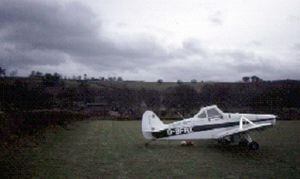
He describes how things unfolded: "I was just about to finish the first spraying load, by diving into the headlands to spray them when, as I pulled up out of a field the engine stopped dead, at about 200 feet above the ground.
"Suddenly, I was flying a glider and knew that I had to keep straight, not to attempt a turn and try to put her down ahead by avoiding going through a high hedge, which would have probably been fatal, but to land heavily just beyond it and live.
"I missed the top of the hedge, before making a heavy impact in a field and wrecking the aircraft by swiping the undercarriage and spray pump propeller off, but with no risk of fire! It was a firm, stalled arrival among the wheat.
"I was shocked at how the engine had just stopped and was confused as to what had caused it to quit so suddenly."
The fuel gauge had shown a positive amount and there had been no low fuel warning light.
"I walked the short distance back to the airstrip to tell my loader John Fergusson the bad news. We went back to the crashed aircraft, and I pointed to the fuel gauge and its positive contents, at which point John tapped it firmly and the pointer suddenly dropped down to below zero and the red light came on. Damn!"
John had learned a lesson the hard way.
"It was the first serious accident in Shropshire of my aerial spraying career with several others in the following seven years, but so long as there were no human injuries, neither the Civil Aviation Authority nor the police were ever aware as engineers magically just rebuilt aircraft – until the next accident."
His plane, G-BFRX, was indeed repaired, only to be completely wrecked in a landing accident in Yorkshire while being used to tow gliders in 1994.
John and fellow agricultural pilot Captain Peter Lawton wrote a book about their experiences in 2017, and John is planning to write more books in future – he's hoping anybody who can help him with the IT side of publishing to contact him at johnhoyte787@gmail.com.
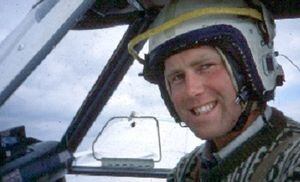
After those aerial adventures in Shropshire his aviation career took him to Kenya and South Australia where he pioneered aerial firefighting, before returning to Britain and having roles as varied as being a maritime pollution control pilot, a freight pilot with a Dakota aircraft, before finally flying jets from 1989 until 2005.
He had several people with him as he made his pilgrimage to the field where, had fate been less kind, his career could all have come to a sudden, fatal, stop.
"Glazeley farmer Willie Jenks recalled the crash well and was glad that no one got hurt. I was also there with a good mate from the past, Brian Humphries who is now a Wellington-based pilot/farmer and was chair of the Shropshire Aero Club at Sleap at that time, and a radio reporter."

